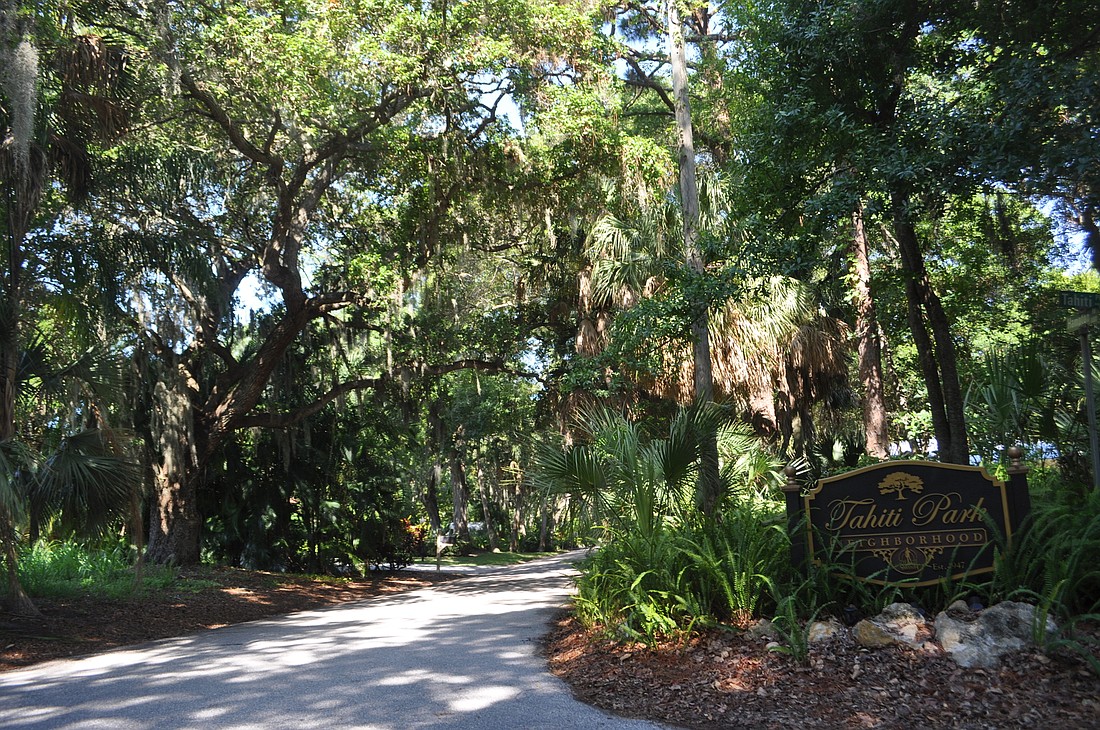- November 28, 2024
-
-
Loading

Loading

Robert Northrop thinks the task of developing a comprehensive strategy for maintaining and growing a robust urban tree canopy will be relatively straightforward for Sarasota officials — as long as the community sees it as a priority.
Northrop, a forestry faculty member with the University of Florida Institute of Food and Agricultural Sciences Extension in Hillsborough County, gave a presentation at the April 19 City Commission meeting on the process of putting together an urban forestry management program. Northrop was the principal author of Tampa’s urban forestry plan, and city staff brought him in as a precursor to considering a similar endeavor locally.
Citizen groups, such as Save Our Sarasota, have formed to lobby for the preservation of green space and against the removal of trees from the public rights of way. In 2017, the city created a Tree Advisory Committee, which spent nearly two years developing a list of more than two dozen policy recommendations. One of them was the creation of an urban forestry management plan.
In a 2019 report, the tree advisory committee found that the city was lacking a systematic approach for managing its trees. Northrop said the benefit of an urban forestry program is that it creates a holistic strategy for integrating the management of trees into the city’s operations.
“To be successful, it has to be systemic, and it becomes a part of all the departments’ decision-making processes,” Northrop said. “Because all of the departments — whether it’s public works, stormwater, parks, planning — all of them influence and are influenced by the distribution and the condition and the specific locations of trees and shrubs throughout the city.”
Although the city attempts to account for such factors as underground utilities and future renovation plans when it considers the placement of trees, some decisions are made on an ad-hoc basis as issues or opportunities arise. On Main Street, the city removed and replaced some trees that created safety and drainage issues after the roots outgrew the area in which they were planted.
Northrop said a proactive strategy for managing trees requires specialized expertise, but over the long term, it improves efficiency and reduces costs for a government. By contrast, he said, a more reactive approach can lead to the weakening of the city’s canopy.
“Through attrition, particularly if we do not pay attention to the vegetation, it becomes a second thought — something left over that you might deal with,” Northrop said. “Meanwhile, the construction and reconstruction of our cities into evermore sanitary environments takes precedence through engineering designing. If we don’t pay attention to [trees], they begin to disappear.”
Northrop’s presentation highlighted a variety of benefits he tied to the maintenance of a robust tree canopy: They create a cooler environment, a particularly useful benefit during Florida summers. They promote biological diversity, remove particulate matter from the air, reduce stress, attract visitors, increase property values and more, he said.
Documents included with the April 19 agenda provide some insight into staff’s vision for an urban forestry program. Staff recommends the creation of an urban forestry coordinator position, the central point of contact for city officials and members of the public regarding the urban forest.
The forestry program would focus on trees in parks and rights of way, coordinating tree installation and maintenance, and providing technical advice for other departments.
Staff notes the city received a three-year Managing Community Forests Grant from the Florida Department of Agriculture. Staff suggests those funds could serve as a foundation for an urban forestry program, with money supporting tree planting, an inventory of street trees and an urban forest master plan.
Northrop said there are questions to be sorted out should the city decide to pursue an urban forestry plan, but he was confident the program would be effective if the city committed to it.
“There are answers to all those questions,” Northrop said. “The real question is: Is there the will to do it?”